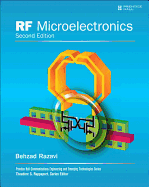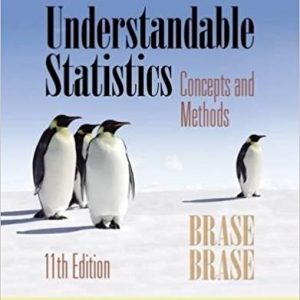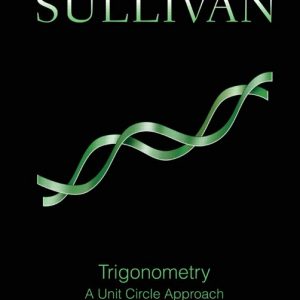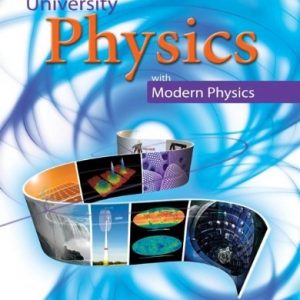Instant download Solutions manual for RF Microelectronics 2nd by Razavi 0137134738 pdf docx epub after payment.

Product details:
- ISBN-10 : 0137134738
- ISBN-13 : 978-0137134731
- Author: Behzad Razavi
The Acclaimed RF Microelectronics Best-Seller, Expanded and Updated for the Newest Architectures, Circuits, and Devices
Wireless communication has become almost as ubiquitous as electricity, but RF design continues to challenge engineers and researchers. In the 15 years since the first edition of this classic text, the demand for higher performance has led to an explosive growth of RF design techniques. In RF Microelectronics, Second Edition, Behzad Razavi systematically teaches the fundamentals as well as the state-of-the-art developments in the analysis and design of RF circuits and transceivers.
Razavi has written the second edition to reflect today’s RF microelectronics, covering key topics in far greater detail. At nearly three times the length of the first edition, the second edition is an indispensable tome for both students and practicing engineers. With his lucid prose, Razavi now
- Offers a stronger tutorial focus along with hundreds of examples and problems
- Teaches design as well as analysis with the aid of step-by-step design procedures and a chapter dedicated to the design of a dual-band WiFi transceiver
- Describes new design paradigms and analysis techniques for circuits such as low-noise amplifiers, mixers, oscillators, and frequency dividers
This edition’s extensive coverage includes brand new chapters on mixers, passive devices, integer-N synthesizers, and fractional-N synthesizers. Razavi’s teachings culminate in a new chapter that begins with WiFi’s radio specifications and, step by step, designs the transceiver at the transistor level.
Table of contents:
Preface to the First Edition xix
Acknowledgments xxi
About the Author xxiii
Chapter 1: Introduction to RF and Wireless Technology 1
1.1 A Wireless World 1
1.2 RF Design Is Challenging 3
1.3 The Big Picture 4
References 5
Chapter 2: Basic Concepts in RF Design 7
2.1 General Considerations 7
2.2 Effects of Nonlinearity 14
2.3 Noise 35
2.4 Sensitivity and Dynamic Range 58
2.5 Passive Impedance Transformation 62
2.6 Scattering Parameters 71
2.7 Analysis of Nonlinear Dynamic Systems 75
2.8 Volterra Series 77
References 86
Problems 86
Chapter 3: Communication Concepts 91
3.1 General Considerations 91
3.2 Analog Modulation 93
3.3 Digital Modulation 99
3.4 Spectral Regrowth 118
3.5 Mobile RF Communications 119
3.6 Multiple Access Techniques 123
3.7 Wireless Standards 130
3.8 Appendix I: Differential Phase Shift Keying 151
References 152
Problems 152
Chapter 4: Transceiver Architectures 155
4.1 General Considerations 155
4.2 Receiver Architectures 160
4.3 Transmitter Architectures 226
4.4 OOK Transceivers 248
References 249
Problems 250
Chapter 5: Low-Noise Amplifiers 255
5.1 General Considerations 255
5.2 Problem of Input Matching 263
5.3 LNA Topologies 266
5.4 Gain Switching 305
5.5 Band Switching 312
5.6 High-IP2 LNAs 313
5.7 Nonlinearity Calculations 325
References 333
Problems 333
Chapter 6: Mixers 337
6.1 General Considerations 337
6.2 Passive Downconversion Mixers 350
6.3 Active Downconversion Mixers 368
6.4 Improved Mixer Topologies 393
6.5 Upconversion Mixers 408
References 424
Problems 425
Chapter 7: Passive Devices 429
7.1 General Considerations 429
7.2 Inductors 431
7.3 Transformers 470
7.4 Transmission Lines 476
7.4.1 T-Line Structures 478
7.5 Varactors 483
7.6 Constant Capacitors 490
References 495
Problems 496
Chapter 8: Oscillators 497
8.1 Performance Parameters 497
8.2 Basic Principles 501
8.3 Cross-Coupled Oscillator 511
8.4 Three-Point Oscillators 517
8.5 Voltage-Controlled Oscillators 518
8.6 LC VCOs with Wide Tuning Range 524
8.7 Phase Noise 536
8.8 Design Procedure 571
8.8.1 Low-Noise VCOs 573
8.9 LO Interface 575
8.10 Mathematical Model of VCOs 577
8.11 Quadrature Oscillators 581
8.12 Appendix I: Simulation of Quadrature Oscillators 592
References 593
Problems 594
Chapter 9: Phase-Locked Loops 597
9.1 Basic Concepts 597
9.2 Type-I PLLs 600
9.3 Type-II PLLs 611
9.4 PFD/CP Nonidealities 627
9.5 Phase Noise in PLLs 638
9.6 Loop Bandwidth 645
9.7 Design Procedure 646
9.8 Appendix I: Phase Margin of Type-II PLLs 647
References 651
Problems 652
Chapter 10: Integer-N Frequency Synthesizers 655
10.1 General Considerations 655
10.2 Basic Integer-N Synthesizer 659
10.3 Settling Behavior 661
10.4 Spur Reduction Techniques 664
10.5 PLL-Based Modulation 667
10.6 Divider Design 673
References 712
Problems 713
Chapter 11: Fractional-N Synthesizers 715
11.1 Basic Concepts 715
11.2 Randomization and Noise Shaping 718
11.3 Quantization Noise Reduction Techniques 738
11.4 Appendix I: Spectrum of Quantization Noise 748
References 749
Problems 749
Chapter 12: Power Amplifiers 751
12.1 General Considerations 751
12.2 Classification of Power Amplifiers 760
12.3 High-Efficiency Power Amplifiers 770
12.4 Cascode Output Stages 776
12.5 Large-Signal Impedance Matching 780
12.6 Basic Linearization Techniques 782
12.7 Polar Modulation 790
12.8 Outphasing 802
12.9 Doherty Power Amplifier 811
12.10 Design Examples 814
References 830
Problems 831
Chapter 13: Transceiver Design Example 833
13.1 System-Level Considerations 833
13.2 Receiver Design 848
13.3 TX Design 861
13.4 Synthesizer Design 869
References 886
Problems 886
Index 889
People also search:
RF Microelectronics 2nd edition
RF Microelectronics 2nd edition pdf
RF Microelectronics
|
how much rf does a microwave emit |





